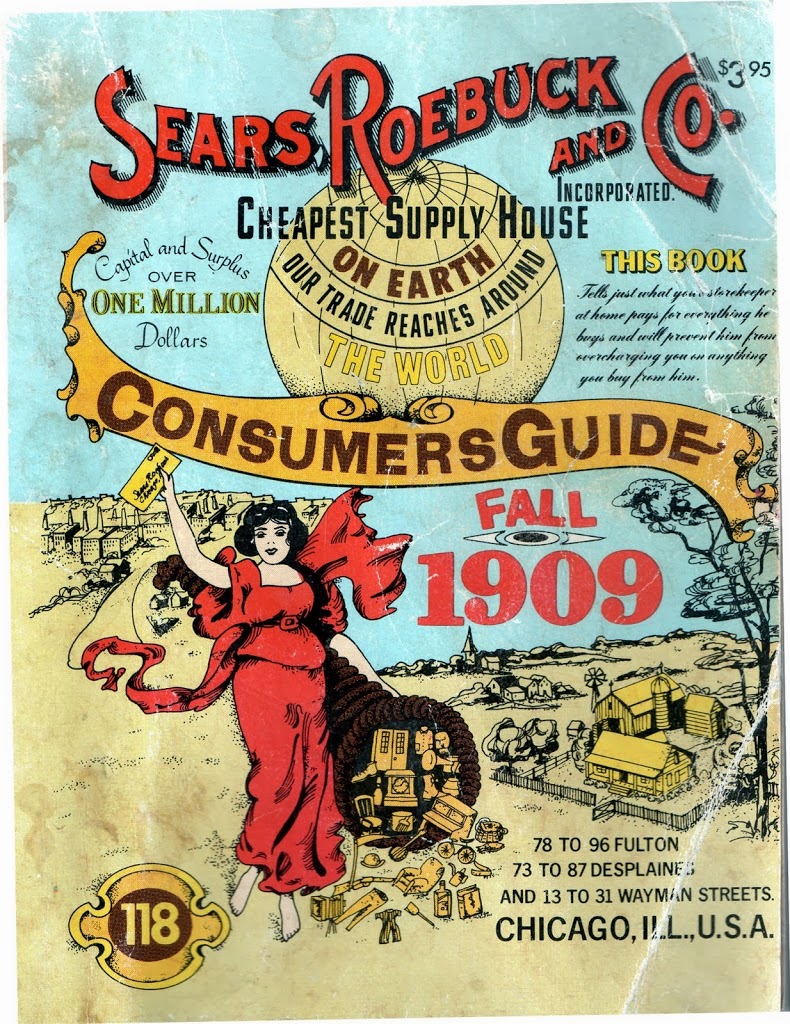For nearly 100 years Sears & Roebuck, the dynamic duo of marketing, was America’s greatest retailer and consumers loved them. Even sang love songs about them. Hard to believe today? Well here’s a bit from a 1949 song by Ray Gilbert, William Okie, and Al Gannay. The first verse of the love song went like this:
Dear Mister Sears and Roebuck:
I been sittin’ here a-thumbin’ through your book.
Page a hundred ninety-nine
Shows a stove that’s mighty fine
And a feller in an apron like a cook.
I been sittin’ here a-thumbin’ through your book.
Page a hundred ninety-nine
Shows a stove that’s mighty fine
And a feller in an apron like a cook.
Dear Mister Sears and Roebuck:
That electric stove’s away above my class.
It’s a beauty, yes indeed,
But the thing I really need
Is that man to teach me how to cook with gas.
That electric stove’s away above my class.
It’s a beauty, yes indeed,
But the thing I really need
Is that man to teach me how to cook with gas.
It ended as follows:
Don’t mean to fuss, poor Roebuck,
But you’ll never fill my order, it appears.
If the shortage is acute,
I’m an easy girl to suit.
I’ll shut up if you will send me Mister Sears.
But you’ll never fill my order, it appears.
If the shortage is acute,
I’m an easy girl to suit.
I’ll shut up if you will send me Mister Sears.
The “book” the song referred to, was the Sears catalog, first published in 1888. It eventually came to be known as “the Consumers’ Bible,” offering catalogs as large as 500 pages long, featuring everything from phonographs to bicycles, milk pails to automobiles, even sold headstones and ready-to-assemble house kits. By 1896 you could order toys and groceries. It was a kind of 19th century paperback Amazon.com. In 1933, Sears issued the first of its famous Christmas catalogs, called the “Sears Wishbook.”
Based on actual market results, along with some actual market research à la our annual Customer Loyalty Engagement Index, it’s pretty apparent that there aren’t a lot of consumers singing love songs to Sears today, and that Sears Holdings are wishing for happier days. Sears Holdings just announced they plan to close its flagship Loop location in Chicago this April, and will begin liquidating merchandise at the store next week. CEO Edward Lampert indicated that he believes Sears can better serve customers with less space and fewer stores. When you figure that one out, let us know.
Sears ranked 4th(of 5) national Department Stores we track in the annual survey. The stores’ own customers do the brand evaluations, but alas, for Sears this is becoming a smaller and smaller segment of the buying public. Brands like Sears end up at the bottom of their respective lists because they fail to meet expectations consumers hold for what drives loyalty in their category. You’ve got to watch those expectations because they almost always move up and brands have a hard time keeping up in the best of circumstances.
Engagement and loyalty metrics always prove out: meet those expectations and you do well. Don’t, and you show up on the bottom of your category list and that always shows up on a brand’s bottom line. Emotional engagement and loyalty metrics are leading-indicators of consumer behavior and it’s axiomatic that it consumers don’t behave well toward a brand, it’s not likely that the brand is going to do well either.
How is Sears doing? Well, not well. The struggling Department Store reported same-store sales declines of 7.4% earlier this month, with year-to-date sales down 3.9%. The closure shouldn’t come as a surprise, though. Sears has been selling off stores and leases to raise desperately needed cash for a financial infusion to stem declining revenues.
Co-Founder Richard Sears was once quoted as saying, “If you buy a good watch you will always be satisfied, and at our prices a good watch will influence the sale of another good watch; and that’s our motto: “Make a Watch Sell a Watch.” Today a better motto for Sears Holdings to follow might be “Watch Those Expectations, Sell A Lot of Product.”
Connect with Robert on LinkedIn.
Find out more about what makes customer loyalty happen and how Brand Keys metrics is able to predict future consumer behavior: brandkeys.com. Visit our YouTube channel to learn more about Brand Keys methodology, applications and case studies.
Share this:

